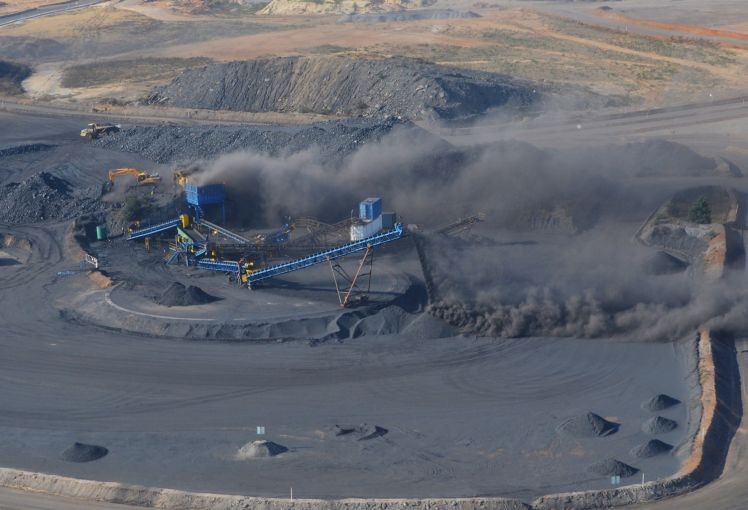Casella UK
Wolseley Rd, Kempston,Bedford MK42 7JY
+44(0)1234844100
info@casellasolutions.com


Dust exposure is one of the main health risks from working in quarries and mines. Fine dust containing crystalline silica, the most common form being quartz, can be produced very quickly as the result of use of fast running machinery, virtually invisible to the human eye.[¹] Exposure to silica dust, found in almost all kinds of rock, sands, clays, shale and gravel can lead to chronic lung diseases, such as silicosis.[²]
In accordance with the Control of Substances Hazardous to Health Regulations 2002 (COSHH) regulations, it is mandatory for all employers to assess and implement measures to protect workers against dust exposure. Workers can only be exposed to a very small amount before it potentially becomes hazardous to health and leads to respiratory conditions that are often fatal.
Around 2.8 million workers globally die from unsafe or unhealth work conditions per year according to a 2018 UN report[³]. In order to control exposure and protect workers, it is important to monitor the level of exposure and ensure adequate control measures are introduced.

In Control
Historically, methods of monitoring dust exposures began with the use of background samplers. In the 1950’s and 1960’s, following a report from the UK Atomic Energy Authority that highlighted the inability of this system to truly measure individual exposure, the concept of personal monitoring began.
In a further bid to enhance methods of monitoring dust exposure and improve workplace regulations through solutions, the UK Respiratory Dust Regulations were replaced in the 1980’s by the prominent Control of Substances Hazardous to Health Regulations (COSHH) that stipulated frequent reviews of technology, inspection, accurate reporting arrangements and mine operators to report hazardous risks.[⁴]
Made to Measure
Personal sampling pumps exist to measure individual’s exposures to a variety of substances, including dust. It is important that the pumps are used with the correct sampling head and in the case of respirable dust a cyclone and filter, which collects the particulate. This allows for additional investigations if necessary at a testing laboratory, including the measurement of silica content within the dust. This provides the industry with further knowledge that will help change working habits whenever dust levels exceed the limits. As the filter loads, modern pumps sense the change in pressure and works harder to maintain the flow rate.
If personal sampling pumps do not give a constant flow rate, sample accuracy will be limited. Improvements have been made to different elements of personal sampling pumps over time. Battery technology, back pressure capability, accurate flow control, minimised pulsation, data download and the ability to be intrinsically safe are have all been improved, ensuring measurement of an individuals’ exposure to harmful substances is as accurate as possible. Understanding these factors in which the personal sampling pump needs to operate effectively will allow employers to choose the most effective device suited to their working environment.

Standards
The latest International Standardisation Organisation ISO 13137 which covers the recognised standard for personal sampling pumps stipulates the latest requirements for personal sampling devices in the mining industry must achieve a stable flow within 5% and keep pulsation less than 10%[⁵]. Casella has recently launched the Flow Detective™ - not only to measure flow, but is the first air sampling pump calibrator on the market with the ability to measure pulsation, indicating if the air flow pulsation exceeds 10%. Excessive pulsation means an unsteady flow and has a detrimental effect on the ability of air samplers to collect the correct fraction of respirable dust, reducing the accuracy of air sampling.
Bridging the Gap
Monitoring must continue to evolve in accordance to the changing production methods and the industry is already moving in a positive direction. Employee health must remain a priority and a core component of any workplace health and safety management system.In addition, educating and training workers in raising awareness about the risks of dust exposure is integral in ensuring that they understand how to prioritise and protect their health.
References:
[¹] http://www.hse.gov.uk/quarries/silica.htm http://www.safequarry.com/hotTopics/Silica%20Golden%20Rules%200811.pdf
[²] http://www.hse.gov.uk/quarries/silica.htm
[³] https://qz.com/1564995/toxic-exposure-at-work-kills-one-worker-every-15-seconds/
[⁴] http://www.hse.gov.uk/pubns/priced/l149.pdf
[⁵] https://www.ncbi.nlm.nih.gov/pmc/articles/PMC4556416/